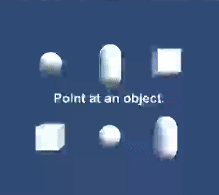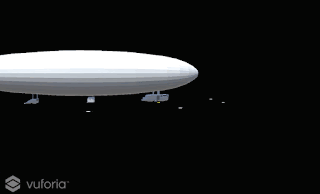Week 2, Part 1: 23 Feb. - 2 Mar. [Augmented Reality history, understanding functionality]
Basil has mentioned on several occasions that the
interactivity of what we produce is what he is most concerned with. Of the
ideas suggested to basil at our meeting, augmented reality is the most easily
accessible to many simultaneous visitors.
“Augmented reality is used to enhance environments or
situations and offer perceptually enriched experiences” (En.wikipedia, 2018)
We decided to each develop an AR application to explore the
functionality available. By building a mobile app there is realistic potential to involve
almost everyone at the event. After downloaded, device cameras could be used to
view the event pamphlet, posters, or information panels and then display
further details or 3D models.
To begin research into augmented reality I first considered
the history of the technology.
The origin of computer generated AR dates back to 1968, when
“Ivan Sutherland developed the first headmounted display system” (Virtual Reality Society,
2017) the system was used to show users simple computer-generated wireframe
drawings. Though the title wasn’t officially established until “Tom Caudell
coined the term ‘augemented reality’ in the early 1990s” (Augment news, 2016).
By the mid-90s, the technology had been employed by the US Air
Force (termed “Virtual Fixtures” (Augmented reality games, 2018)) as part of
pilot training programmes – with their funding fuelling further research and
development.
The application of AR entered mainstream entertainment in
the late-90s with investment continuing to grow. In 1999, there was a
significant leap forward when “Hirokazu Kato from the Nara Institute of Science
and Technology released a unique piece of software called the ARToolKit.”
(Augmented reality games, 2018). This open-source tracking library provided a
foundation for developers to produce further applications.
Shortly after this, the first outdoor mobile AR video game
was produced in 2000. This trend of rapid growth in development has continued exponentially
in recent history, with hardware required to run applications becoming ever
more accessible to developers and consumers.
Large companies, including Microsoft and Google are heavily
investing in and producing equipment specific to the implementation of AR
experiences (Google Glass, Hololens etc), indicating the sector will
continue to grow.
To begin work on my project, my first task will be to assess
available methods of implementing augmented reality, then begin experimenting
with its functionality to determine viability for the airship exhibition.
References
- Augment News. (2018). Infographic: The History of Augmented Reality - Augment News. [online] Available at: http://www.augment.com/blog/infographic-lengthy-history-augmented-reality/ [Accessed 26 Feb. 2018].
- Augmented-reality-games.com. (2018). Augmented Reality History. [online] Available at: http://www.augmented-reality-games.com/history.php [Accessed 26 Feb. 2018].
- En.wikipedia.org. (2018). Augmented reality. [online] Available at: https://en.wikipedia.org/wiki/Augmented_reality [Accessed 26 Feb. 2018].
- Virtual Reality Society. (2018). History Of Virtual Reality - Virtual Reality Society. [online] Available at: https://www.vrs.org.uk/virtual-reality/history.html [Accessed 26 Feb. 2018].



Comments
Post a Comment